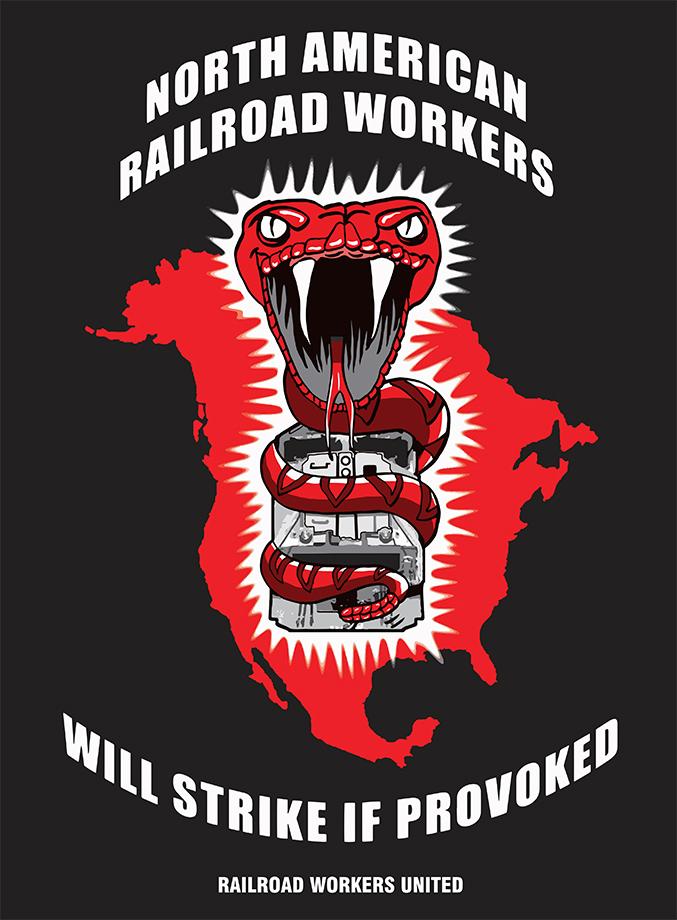Rail workers may strike next month
Interview with Railroad Workers United co-chair

Paul KD: President Biden just appointed a Presidential Emergency Board to help resolve the current negotiations around a national rail contract. What is the PEB, and what is its role in the negotiations?
Ross Grooters: A PEB is a U.S. president-appointed group of three mediators. These three people typically have experience in labor case law and mediation. They will look at the merits of the United Rail Unions’ Coordinated Bargaining Coalition proposal and the National Carriers’ Conference Committee proposal, and from there they have 30 days to make a non-binding contract recommendation based on their findings. Their recommendation should occur in the middle of August (the 18th, I believe).
PKD: What can rail workers do to put pressure on the PEB? What are the unions and the companies doing to lobby the PEB, and the Biden Administration more broadly?
RG: Both the unions and the companies are waging narrative battles in the press. It’s a tale as old as labor and capital. While it’s important, at least as far as rank and file railroad workers are concerned, I believe the PEB is the wrong point of pressure. What’s done is done and we can’t necessarily impact the PEB recommendation directly. Besides both the unions or the carriers (railroad companies) can reject the PEB recommendation. I believe this is a likely outcome. Once this occurs there is a 30 day cooling-off period before a work stoppage—lockout or strike—could occur. The timeline for this is mid to late September. Because of this I believe our best course of action is to continue building support for a strike. Organize our locals and community support, and hold rallies. Under the Railway Labor Act, an act of Congress can force us back to work. Our congressional members would then legislate an agreement—that’s where we can lobby. Until that happens, we have the ability to threaten a work stoppage. We need to leverage that power.
PKD: The Federal Railroad Administration (FRA) looks likely to announce a rule mandating two-person crew sizes. Why is this such an important rule for rail workers?
RG: The number one reason this rule is important is for the safety of us as workers and for the safety of the communities through which we operate. Railroads have been deregulated and allowed to have their way, creating longer, heavier trains with incredibly dangerous chemicals. They’ve been allowed to block crossings with trains which are sometimes more than three miles long. In an emergency two people on a train is the first and quickest response. Add distracting technologies which require constant monitoring and you need a second set of eyes.
Fatigue—both physical fatigue and decision fatigue—are issues every railroad worker has faced on the job. With on-call schedules it can be difficult to manage a work/rest cycle. There is no typical scheduling. An over-the-road railroad worker might get a two-hour work notice to report at 8am, 8pm, midnight and 4am in successive days. This is difficult for two people working together. It becomes exponentially harder on your own. Beyond that the job has incredibly long and isolated hours.
The FRA mandating the rule is necessary out of a need for safety, but they’ve left a three mile long train sized hole in their proposed rule. They’ve left a loophole for rail carriers to justify safe operation. It vague and only takes a sympathetic administrator, arbitrator or judge to rule in the railroads favor. We need comments submitted to the FRA to encourage the rule, but also to close the loophole. Here’s a link to the statement we put out as Railroad Workers United and you can submit comments to the FRA through this link. I encourage all readers to do so. If you need help send me a message. Twitter @RossGrooters is a good way to connect.

PKD: Finally, with inflation and the continuing supply chain crisis, Biden is probably worried about the prospect of a national rail strike. While a couple unions have taken strike authorization votes, a potential strike still seems far off in the future. How likely is that as a possibility? What can workers not in the industry do to support rail workers?
RG: There hasn’t been a national rail strike since 1991, and an act of Congress ended that strike in less than 24 hours. There’s more chance of a strike in September than anytime since. Congress could choose to stand by. But more than likely they will force us back to work. I’d like to see lawmakers sit this out. A Godzilla “let them fight” moment. This is unlikely, so we will need congressional support for a favorable agreement. More interesting, and more important to me, is building and exercising power. Making connections within the labor movement and beyond to exercise our power using our rights. There have been rallies and pickets across the country. Anyone can join this effort. Lastly, follow Railroad Workers United on social media (twitter: @railroadworkers facebook: Railroad Workers United). We frequently provide updates on happenings on the rails, including where to find future actions. But you can bet, if a strike happens in September, there will picket at a depot, terminal or railyard near you. And if I’m being self-serving, you can wear your support by purchasing at cost one of these cool shirts that labor cartoonist Mike Konopacki helped design.
Featured Image Credit: Photo by Bo Insogna; modified by Tempest.
We want to hear what you think. Contact us at editors@tempestmag.org. And if you've enjoyed what you've read, please consider donating to support our work:
DonatePaul KD View All
Paul KD is a member of UFCW Local 663, an activist in the labor movement in the Twin Cities, and a member of the Tempest Collective.
